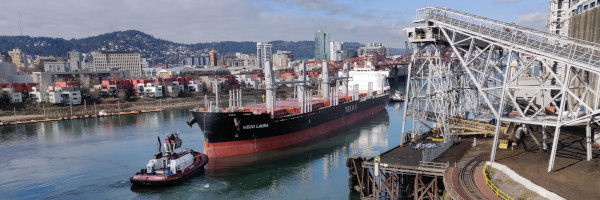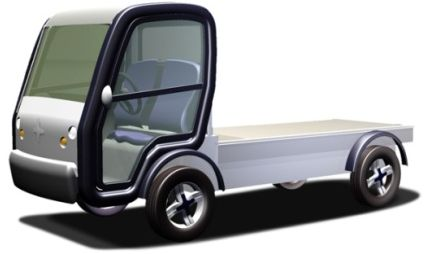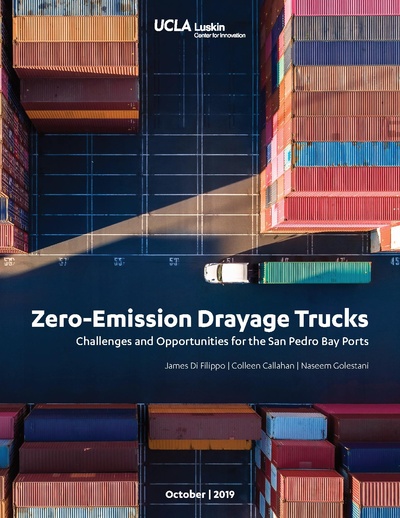Freight
| Transportation | |||||||||||||||||||||||||||||||
|---|---|---|---|---|---|---|---|---|---|---|---|---|---|---|---|---|---|---|---|---|---|---|---|---|---|---|---|---|---|---|---|

| |||||||||||||||||||||||||||||||
| Sectors | Transportation | ||||||||||||||||||||||||||||||
| Contact | Wilfred Pinfold | ||||||||||||||||||||||||||||||
| Topics |
| ||||||||||||||||||||||||||||||
Activities
Press
| |||||||||||||||||||||||||||||||
- Authors
Electrification and automation are transforming the freight transportation industry in a number of ways.
One of the main benefits of electrification is that it can help reduce the environmental impact of freight transportation. Electric vehicles (EVs) produce zero emissions, which can help reduce air pollution and greenhouse gas emissions. In addition, EVs are typically quieter than their internal combustion engine counterparts, which can help reduce noise pollution in urban areas.
Automation, on the other hand, has the potential to increase efficiency and reduce costs in the freight transportation industry. Autonomous vehicles, for example, can operate around the clock without the need for breaks or shifts, which can help increase productivity and reduce labor costs. Automation can also help improve safety by reducing the risk of human error, which is a leading cause of accidents in the transportation industry.
However, it's worth noting that the adoption of electrification and automation in the freight transportation industry is still in the early stages, and there are many challenges to overcome before these technologies can be widely adopted. These challenges include the high cost of electric and autonomous vehicles, the need for infrastructure such as charging stations and data networks, and regulatory and legal issues.
Shipping
Electrification and automation are also having an impact on the handling of freight in shipping ports.
One way that electrification is being used in shipping ports is through the use of electric cranes and other material handling equipment. Electric cranes and other electric material handling equipment can help reduce emissions and noise pollution in ports, and they may also be more energy efficient than their fossil fuel-powered counterparts.
Automation is also being used in shipping ports to improve efficiency and reduce costs. For example, some ports are using autonomous cranes and other material handling equipment to load and unload cargo from ships. These autonomous systems can operate around the clock without the need for breaks or shifts, which can help increase productivity and reduce labor costs. In addition, automation can help improve safety by reducing the risk of accidents caused by human error.
Airport Freight
Electrification and automation are also having an impact on the handling of freight in airports.
One way that electrification is being used in airports is through the use of electric ground support equipment (GSE), such as baggage carts and tugs. Electric GSE can help reduce emissions and noise pollution in airports, and they may also be more energy efficient than their fossil fuel-powered counterparts.
Automation is also being used in airports to improve efficiency and reduce costs. For example, some airports are using autonomous baggage handling systems to sort and transport luggage to and from planes. These systems can operate around the clock without the need for breaks or shifts, which can help increase productivity and reduce labor costs. In addition, automation can help improve safety by reducing the risk of accidents caused by human error.
Last Mile Freight
Low-speed electric vehicles (EVs) are being used for last mile freight delivery in some cases. These types of EVs are designed for use in urban areas and have a top speed of around 25 mph. They are typically smaller and more maneuverable than traditional delivery trucks, which makes them well-suited for navigating through busy city streets and delivering packages to residential neighborhoods.
Low-speed EVs have several advantages over traditional delivery vehicles in terms of their environmental impact. They produce zero emissions, which can help reduce air pollution and greenhouse gas emissions in urban areas. They are also typically quieter than internal combustion engine vehicles, which can help reduce noise pollution.
Drones are also being tested and used for last mile freight delivery in some cases. Drones have the potential to revolutionize last mile delivery by providing a fast and efficient way to transport packages over short distances. They can navigate through busy city streets and deliver packages directly to customers' homes or businesses, which can save time and reduce the need for traditional delivery vehicles.
One of the main advantages of using drones for last mile delivery is that they can operate quickly and efficiently over short distances, which can help reduce delivery times and improve customer satisfaction. They can also help reduce the environmental impact of last mile delivery by reducing the need for traditional delivery vehicles, which can produce emissions and contribute to air pollution.



















